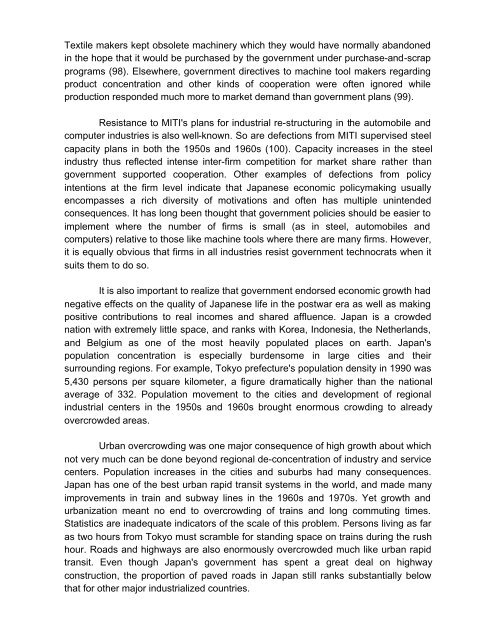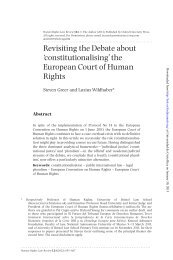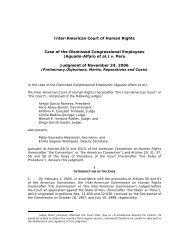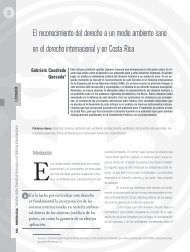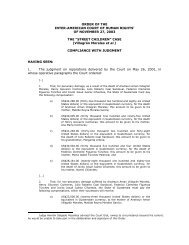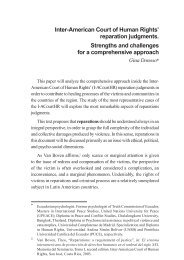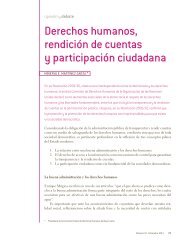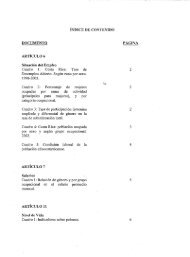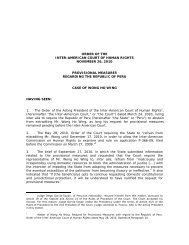The Political Economy of Japan Bradley M. RICHARDSON
The Political Economy of Japan Bradley M. RICHARDSON
The Political Economy of Japan Bradley M. RICHARDSON
- No tags were found...
You also want an ePaper? Increase the reach of your titles
YUMPU automatically turns print PDFs into web optimized ePapers that Google loves.
Textile makers kept obsolete machinery which they would have normally abandonedin the hope that it would be purchased by the government under purchase-and-scrapprograms (98). Elsewhere, government directives to machine tool makers regardingproduct concentration and other kinds <strong>of</strong> cooperation were <strong>of</strong>ten ignored whileproduction responded much more to market demand than government plans (99).Resistance to MITI's plans for industrial re-structuring in the automobile andcomputer industries is also well-known. So are defections from MITI supervised steelcapacity plans in both the 1950s and 1960s (100). Capacity increases in the steelindustry thus reflected intense inter-firm competition for market share rather thangovernment supported cooperation. Other examples <strong>of</strong> defections from policyintentions at the firm level indicate that <strong>Japan</strong>ese economic policymaking usuallyencompasses a rich diversity <strong>of</strong> motivations and <strong>of</strong>ten has multiple unintendedconsequences. It has long been thought that government policies should be easier toimplement where the number <strong>of</strong> firms is small (as in steel, automobiles andcomputers) relative to those like machine tools where there are many firms. However,it is equally obvious that firms in all industries resist government technocrats when itsuits them to do so.It is also important to realize that government endorsed economic growth hadnegative effects on the quality <strong>of</strong> <strong>Japan</strong>ese life in the postwar era as well as makingpositive contributions to real incomes and shared affluence. <strong>Japan</strong> is a crowdednation with extremely little space, and ranks with Korea, Indonesia, the Netherlands,and Belgium as one <strong>of</strong> the most heavily populated places on earth. <strong>Japan</strong>'spopulation concentration is especially burdensome in large cities and theirsurrounding regions. For example, Tokyo prefecture's population density in 1990 was5,430 persons per square kilometer, a figure dramatically higher than the nationalaverage <strong>of</strong> 332. Population movement to the cities and development <strong>of</strong> regionalindustrial centers in the 1950s and 1960s brought enormous crowding to alreadyovercrowded areas.Urban overcrowding was one major consequence <strong>of</strong> high growth about whichnot very much can be done beyond regional de-concentration <strong>of</strong> industry and servicecenters. Population increases in the cities and suburbs had many consequences.<strong>Japan</strong> has one <strong>of</strong> the best urban rapid transit systems in the world, and made manyimprovements in train and subway lines in the 1960s and 1970s. Yet growth andurbanization meant no end to overcrowding <strong>of</strong> trains and long commuting times.Statistics are inadequate indicators <strong>of</strong> the scale <strong>of</strong> this problem. Persons living as faras two hours from Tokyo must scramble for standing space on trains during the rushhour. Roads and highways are also enormously overcrowded much like urban rapidtransit. Even though <strong>Japan</strong>'s government has spent a great deal on highwayconstruction, the proportion <strong>of</strong> paved roads in <strong>Japan</strong> still ranks substantially belowthat for other major industrialized countries.


